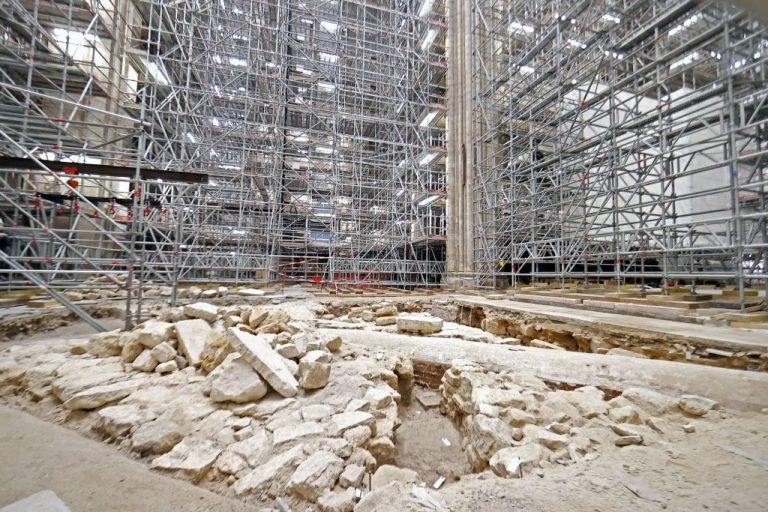Archaeologists, digging beneath the Notre Dame Cathedral, have uncovered a trove of artifacts including statues, sculptures, tombs and pieces of an original rood screen dating back to the 13th century.
The find also included “several ancient tombs from the middle ages and a body-shaped lead sarcophagus buried at the heart of the fire-ravaged monument under the floor of the transept crossing,” The Guardian reported.
French experts are describing the find as “extraordinary and emotional.”
Christophe Besnier, who led the scientific team that made the discovery, told The Guardian, “We uncovered all these riches just 10-15cm under the floor slabs. It was completely unexpected. There were exceptional pieces documenting the history of the monument.”
Besnier said, “It was an emotional moment. Suddenly we had several hundred pieces from small fragments to large blocks including sculpted hands, feet, faces, architectural decorations and plants. Some of the pieces were still coloured.”
Success
You are now signed up for our newsletter
Success
Check your email to complete sign up
The discovery was made public on April 14 by France’s national archaeological institute (Inrap).
The team was recruited in February of this year to carry out a “preventive dig” under a section of the cathedral floor and work continued until April before a 100ft-high 600-tonne scaffold was erected to facilitate the reconstruction of the cathedral’s spire.
The rood screen, an ornate partition between the chancel and nave, was of particular interest. Only a fews pieces of the original rood screen were thought to remain with some pieces being stored in the cathedral while others are on show in the Louvre.
In Catholic churches, most rood screens were removed during the Counter-Reformation in the 16th and 17th centuries making the find particularly special.
According to The Guardian, “The rest of the Notre Dame rood appears to have been carefully interred under the cathedral floor during the building’s restoration by Eugène Viollet-le-Duc – who added the spire – in the mid-19th century.”
Several other slabs of the rood screen were identified however they were outside the specified limit of the dig. Besnier said, “We know they are there and won’t be damaged. Hopefully, we will be able to uncover them at a later date.”
One unearthed piece that archaeologists found particularly compelling was an intact stone sculpture of a man, believed to be a representation of Jesus.
Experts believe that the lead sarcophagus, which may date as far back as the 14th century, contains the body of a high church official. The team of scientists used a camera to peek inside the coffin and saw “plant remains under the head of the deceased alongside hair and fragments of cloth, but there was no plate identifying the occupant.”
President of Inrap, Dominique Garcia, said DNA tests would be carried out but added: “A sarcophagus containing a human body is not an archaeological object. These are human remains, and while examining the sarcophagus and analysing the body and other objects inside, we must do so with respect.”
Garcia said that it’s “too early to say” where the body would be reburied once the tests were complete, however said that “it’s possible that it will be reburied somewhere in the cathedral.”

















